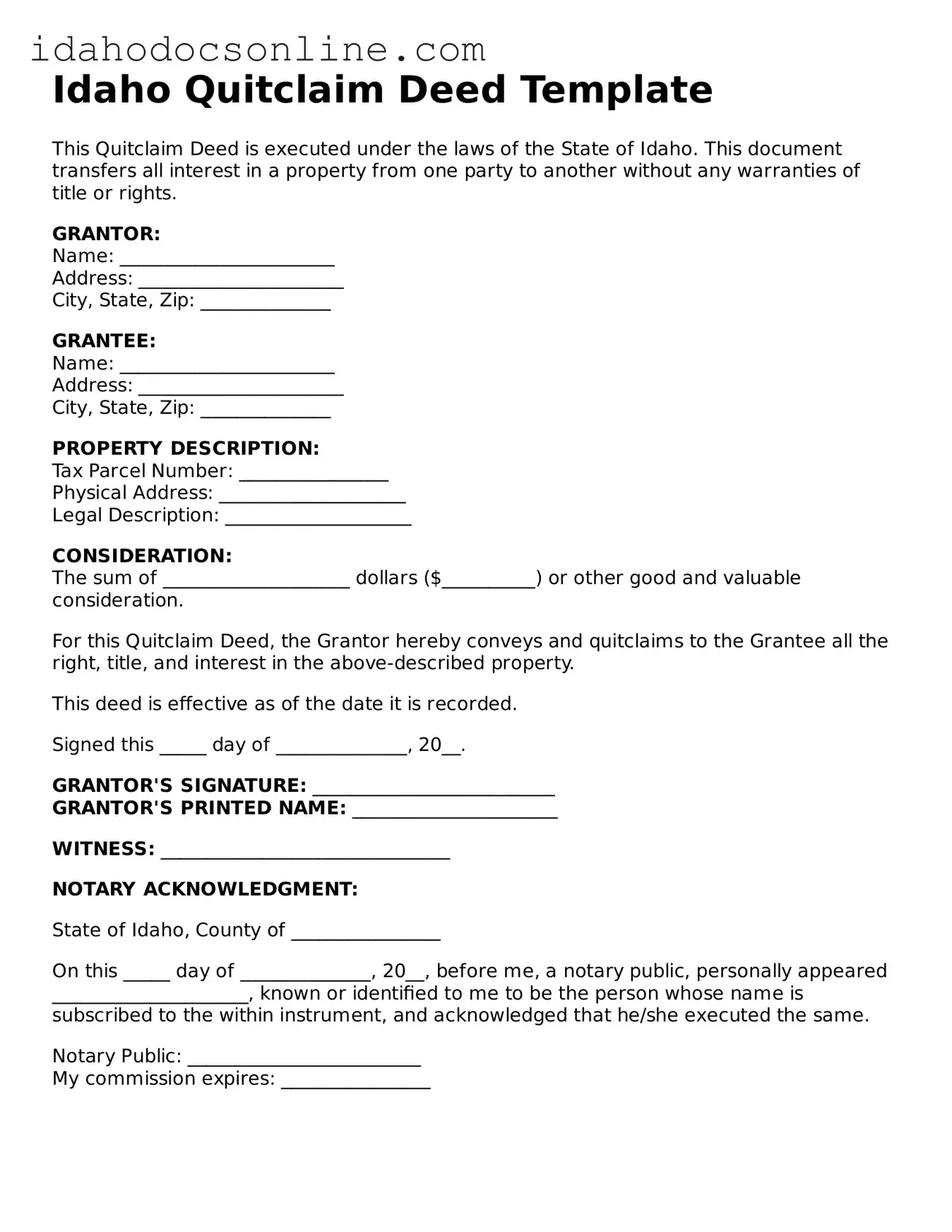Idaho Quitclaim Deed Template
This Quitclaim Deed is executed under the laws of the State of Idaho. This document transfers all interest in a property from one party to another without any warranties of title or rights.
GRANTOR:
Name: _______________________
Address: ______________________
City, State, Zip: ______________
GRANTEE:
Name: _______________________
Address: ______________________
City, State, Zip: ______________
PROPERTY DESCRIPTION:
Tax Parcel Number: ________________
Physical Address: ____________________
Legal Description: ____________________
CONSIDERATION:
The sum of ____________________ dollars ($__________) or other good and valuable consideration.
For this Quitclaim Deed, the Grantor hereby conveys and quitclaims to the Grantee all the right, title, and interest in the above-described property.
This deed is effective as of the date it is recorded.
Signed this _____ day of ______________, 20__.
GRANTOR'S SIGNATURE: __________________________
GRANTOR'S PRINTED NAME: ______________________
WITNESS: _______________________________
NOTARY ACKNOWLEDGMENT:
State of Idaho, County of ________________
On this _____ day of ______________, 20__, before me, a notary public, personally appeared _____________________, known or identified to me to be the person whose name is subscribed to the within instrument, and acknowledged that he/she executed the same.
Notary Public: _________________________
My commission expires: ________________
